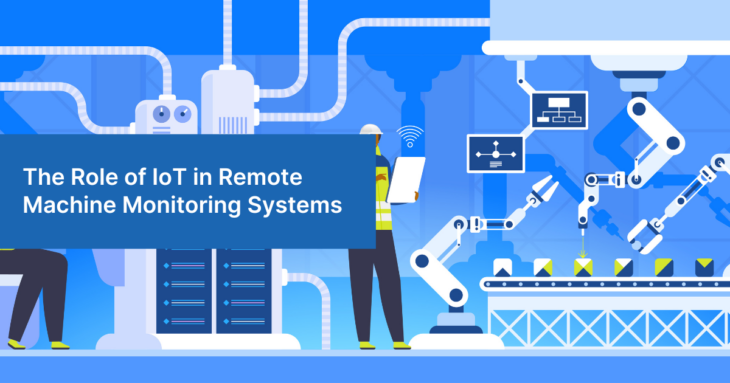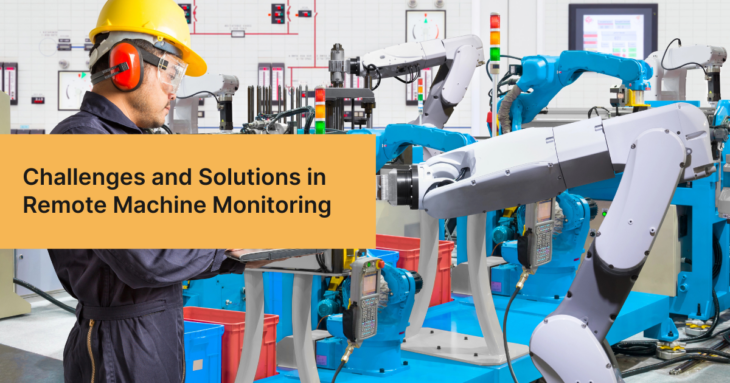Predictive vs. Preventive Maintenance: Which Strategy is Better for Manufacturers
Downtime in manufacturing is quite expensive nowadays. To prevent downtime, or more precisely, minimise unexpected breakdowns and equipment’s useful life, manufacturers take strategic approaches to maintenance. Two very common techniques are prediction and prevention. Effective maintenance can make a difference in winning in manufacturing. Equipment failure interrupts production, wastes resources, and could compromise safety. Maintaining equipment proactively minimises unplanned downtime and ensures manufacturers’ production efficiency and bottom line. Preventive and predictive maintenance also allow manufacturers to align their resources efficiently, reduce costs, and extend equipment lifespan. The advantages created create a foundation for enhanced productivity and profitability, thus making maintenance an investment in the company’s future. Predictive Maintenance Predictive maintenance is a strategy that uses real-time data to predict equipment failures before they happen. Unlike a fixed schedule, PdM relies on condition-monitoring technologies and data analytics. It determines when equipment most likely needs maintenance. It can predict problems with high accuracy, thus avoiding unnecessary interventions. Technologies in Predictive Maintenance Some of the advanced technologies required for predictive maintenance are: Sensors: These collect data on equipment health indicators like temperature, vibration, and pressure, offering insights into real-time performance. Data Analytics and Machine Learning: Analytical tools process sensor data to identify trends and anomalies, enabling accurate predictions about when a component may fail. Internet of Things (IoT): IoT devices interconnect machines and remote machine monitoring systems, allowing better monitoring and analysing equipment status across the facility. Cloud Computing: Cloud platforms store and process big data, making it available for access across locations and systems. Benefits of Predictive Maintenance The benefits of predictive maintenance are the following: Reduced Downtime: PdM allows teams to identify those potential issues before they become costly downtime. Improved Efficiency: PdM ensures that time and resources are used efficiently since maintenance occurs when necessary. Increased Equipment Life: Catching problems early could prevent additional wear on the equipment, extending its life. Cost Savings: Reduced breakdowns and efficient resource usage will save money. Preventive Maintenance Preventive maintenance is performed at regular intervals regardless of the machine’s condition. This approach uses historical data, manufacturer recommendations, and standardised schedules to guide maintenance activities. According to the schedule, it minimises the risk of equipment failure, provides constant performance, and prolongs equipment life. Scheduling and planning in preventive maintenance Proper planning and scheduling are essential for effective preventive maintenance. Maintenance teams use maintenance management systems to log equipment history, track intervals, and plan upcoming service dates. Scheduling tasks based on manufacturer recommendations and the company’s operational requirements ensures that equipment is run over long periods without disrupting production schedules. Proper planning prevents resource overload by spacing out maintenance according to operational requirements. Benefits of Preventive Maintenance Preventive maintenance is similarly special, with its benefits, which include: Less Downtime Unplanned: PM reduces the chances of unplanned breakdowns through regular equipment servicing. Extended equipment life is achieved by keeping equipment in the best operating condition and servicing regularly. Predictable costs: This approach allows cost predictability while budgeting. The scheduled costs are planned; hence, maintenance costs will readily be covered. Comparing Predictive and Preventive Maintenance Both predictive and preventive maintenance offer benefits through different approaches, costs, and applications. Advantages and Disadvantages Predictive Maintenance Advantages: It cuts down on unnecessary maintenance and reduces costs due to downtime, thus increasing efficiency. Disadvantages: Sensor installation and analytics infrastructure require a high upfront cost and skilled personnel for data interpretation. Preventive Maintenance Advantages: The schedule and costs are predetermined, easy to implement, and prolong equipment life. Disadvantages: It may lead to excessive maintenance and shutdown periods as equipment condition is not considered. Cost Comparison Predictive maintenance tends to have a higher upfront cost due to sensor and technology investments. However, the savings in downtime and repair costs can make up for this in the long run. Preventive maintenance has a lower upfront cost, but regular, scheduled services require more frequent resource use. Hence, it can be more expensive over time if unnecessary interventions occur. Factors to Consider When Choosing Between Strategies When selecting a maintenance approach, manufacturers should consider factors like: Equipment Criticality: Predictive maintenance better serves highly critical equipment since it emphasises minimising downtime. Maintenance History: Equipment with many failure incidents may require predictive approaches to correctly identify the root cause of failure. Hybrid Approach A hybrid maintenance strategy combines predictive and preventive techniques. It maximises equipment performance and minimises downtime. Manufacturers can perform preventive maintenance on less critical equipment using a hybrid approach while applying predictive maintenance to high-value assets. Remote machine monitoring systems prove useful in both cases. Advantages of a Hybrid Approach The hybrid approach provides more flexibility, avoids unexpected breakdowns, and keeps maintenance costs manageable. Manufacturers can combine both methods to ensure all the equipment is well maintained according to its needs and criticality, optimising performance and cost. Examples of Successful Hybrid Maintenance Strategies For example, plants in the automotive manufacturing industry might use predictive maintenance on the high-wear robotic arms but apply preventive maintenance to conveyor systems. In food processing facilities, the high-cost precision machinery, such as compressors, would receive predictive maintenance, while the less intricate machinery would be scheduled for preventive maintenance. Choosing the correct maintenance strategy is critical to a manufacturer’s efficiency and profitability. Both predictive and preventive maintenance present their benefits and may be suited to specific needs in equipment and operations. The best solution is a hybrid approach that combines predictive accuracy with preventive reliability. An effective maintenance strategy uses remote machine monitoring systems and helps minimise downtime, optimise costs, and keep production running in full swing, giving manufacturers an edge in the competition in their industry.
Read MoreTop 5 Benefits of Data Visibility for Optimizing Manufacturing Operations
The manufacturing industry surpasses all other sectors in cloud adoption, with 32% of manufacturers claiming the “cloud leader” designation. The industrial business is transitioning to digital processes as a necessity, not a choice. Cloud computing increases profitability by 22% and typically reduces costs by 23% through enhanced manufacturing processes and planning procedures. Only those who can utilise the cloud will swiftly overtake competitors with reduced production costs and margins. Manufacturing is transformed with data visibility, which means seeing, analysing, and understanding critical information in real-time. When every step of production creates data, clarity gives the manufacturer control over the process and outcome in a way that no one else can. Manufacturers can avoid inefficiencies, quality-control issues, and missed opportunities for savings. These are some productivity barriers that would limit one’s response time to the market demand. Data visibility in MES software solutions is essential for a business’s successful operation and long-term profitability, which survives on precision and speed in an industry. Benefit 1: Improved Decision Making Over 36% of industrial decision-makers find a need for more data and insights to be the most frustrating factor. In manufacturing, data visibility provides real-time insights that underpin well-informed decision-making. Monitoring production metrics in real-time allows manufacturers to make swift adjustments, ensuring that operations align with strategic objectives. Companies can proactively address potential system issues before they escalate by analysing trends and anomalies. For example, identifying seasonal production fluctuations allows manufacturers to adjust schedules. This feature optimises capacity and labour costs. Manufacturing execution system vendors ensure that data availability transforms raw information into actionable intelligence crucial for staying competitive in a constantly changing market. Benefit 2: Enhanced Efficiency and Productivity 61% of firms report challenges with data management, including acquiring new clients, optimising operations, and boosting productivity, which has impeded or will slow down automation efforts. Manufacturers can significantly enhance their productivity levels by leveraging data visibility. Real-time data can identify bottlenecks so that teams will address those issues before they impact the production schedule. For example, a manufacturer can identify a slow-moving assembly line, trace the cause of the delay, and allocate resources to rectify it. Data visibility lets teams see when equipment needs maintenance, reducing unexpected breakdowns and downtime. Through these measures, manufacturers optimise the production flow, directly relating to increased productivity and overall operational efficiency through MES software solutions. Benefit 3: Better Quality Control Quality control relies significantly on data visibility, whereby product quality is monitored from beginning to end in manufacturing. Real-time data allows the quality deviation at each stage to be noticed before flawed products reach the market. Data from the results of quality tests and the production processes can identify areas that commonly go wrong, and those processes can then be optimised to prevent their occurrence. Big data, driven by increasing interest in IoT and predictive maintenance, will become a significant trend. Manufacturers may expect every surface to become a sensor for real-time insights. Such advanced quality control minimises defects. It also helps avoid recalls, preserves the brand image, and finally ensures customer satisfaction—all factors associated with a successful commercial enterprise. Benefit 4: Increased Cost Savings Cost savings are the most concrete advantage of data visibility in manufacturing. By having all the operational data, manufacturers can determine areas of cost reduction. For instance, resource allocation data might identify the overuse of certain materials, and more strategic purchasing and usage can be made. In addition, inventory levels can be seen to prevent overstocking and understocking, optimising inventory management. By fine-tuning these aspects, companies eliminate unnecessary waste and spend less. The overall effects of such data-driven decisions manifest in considerable cost savings, thus directly contributing to profitability. Understanding what data is available, who owns it, and how to use it has enormous potential in three main areas: increasing the use of technology, cutting costs, and increasing operational effectiveness. With a 10% improvement in data usability, the typical Fortune 1000 company’s revenue could rise by approximately $2 billion, or $55,900 in sales per employee. Benefit 5: Enhanced Customer Satisfaction Data visibility improves customer satisfaction, product quality, lead times, and delivery schedules. Real-time data helps refine production schedules to avoid delays and guarantee timely delivery. Data related to consumer preferences may also be forwarded to deliver custom-made products and services that meet the consumer’s changing expectations. For example, stockouts can be prevented altogether, and manufacturers can process orders quickly when this data is used to configure production according to customer demand. Increased retention and loyalty from the marketplace lead to sources of competitive advantage in this buyer-centric market. Demonstrating the usefulness of data when properly understood and handled is essential to altering an organisation’s DNA. Business units committed to using data, having the proper focus, and undergoing a culture change may easily set themselves apart from rivals. Conclusion Data visibility helps benefit manufacturers in ways related directly to improved decision-making and increased consumer happiness. Since manufacturing is data-oriented, companies that invest in data visibility stand well toward significant operational competitive gains. Manufacturing execution system vendors optimise on improving efficiency and quality because once data is transformed into knowledge, it forms the nucleus for sustainable growth or endurance in the industry’s changing landscape.
Read MoreTop Trends in Manufacturing Execution Systems and Smart Energy Management
Manufacturing execution systems have revolutionised factory management. The technology is an innovation on its own. However, with further advancements in this technology, efficiency and productivity have increased. Manufacturing execution system vendors are integrating their systems with new technologies for faster turnarounds. Companies that have adopted these systems say they provide better management and assistance than ever before. The same goes for smart energy management systems. The trends showcase that companies rely on this technology to meet their sustainability goals and optimise their energy consumption. Let’s look at these trends to understand how these new technologies work. Manufacturing Execution Systems (MES) Trends Digital Twin Integration A digital twin is a virtual visualisation of a real product or process that may be utilised with an MES. It is a virtual depiction of an actual product or process, enabling real-time visibility and control over manufacturing operations. MES may gather and analyse data, monitor production activities, and deliver performance, status, and quality reports. Artificial Intelligence and Machine Learning Integrating generative AI into MES will increase predictive maintenance, resource allocation, and product quality. However, it primarily aids shop floor operators and managers in making choices and managing production processes using data expertise. For example, in the fashion industry, accuracy and compliance are critical. AI will assist operators in running safer, more dependable manufacturing processes, lowering production irregularities and eliminating risks. This will be especially beneficial in overcoming the workforce’s lack of expertise when older, more experienced workers retire in growing numbers. Internet of Things IoT and edge computing provide real-time monitoring and control of manufacturing operations. In the FMCG business, this can result in better inventory management, faster market reaction times, and greater product monitoring across the supply chain. All of these factors contribute to high levels of quality control and customer satisfaction. For instance, Prescient’s factoryCONNECT uses IoT to monitor and optimise supply chains. Companies testify that its sensors have significantly reduced the downtime of the production line and increased its output. Cloud-Based MES Cloud-based MES helps enterprises streamline production to meet market demand and offer new goods more quickly. It is more cost-effective and feasible for manufacturers since it eliminates the need for physical equipment and additional IT personnel. Cloud-based MES enables firms to connect departments and include customers and subcontractors in the supply chain. It also assists manufacturers in enabling AI, Digital Twins, and Machine Learning to enhance visibility, analysis, and collaboration. Cybersecurity Manufacturing execution system vendors are performing the following operations to secure your data: Use a powerful encryption method, such as AES (Advanced Encryption Standard), to safeguard data in transit and at rest. Use tight access restrictions and multifactor authentication to prevent unwanted access. Ensure that MES software is regularly updated and patched. Monitor network traffic with firewalls and intrusion detection systems to identify possible dangers. Smart Energy Management (SEM) Trends Energy Efficiency Smart energy management systems have in-built audit tools that provide automated reports. These reports help in aligning business processes with smart energy goals. The technology aims to democratise energy efficiency and transparency across the organisation, making it crucial for optimisation. Renewable Energy Integration Renewable energy integration refers to linking renewable energy sources to the electrical grid. It entails generating, transmitting, and distributing renewable energy into the conventional power grid. Solar, wind, and storage systems can be installed in distant places or isolated from the main grid during outages. New standards and guidelines are created to link more dispersed energy systems. Machine learning algorithms examine big datasets to anticipate renewable energy power outputs. These methods will help promote renewable energy use. Demand-side management (DSM) Demand Side Management refers to a range of tactics used by SEM providers to reduce energy consumption. SEM provides time-of-use or peak-load pricing to encourage companies to save energy during peak hours. It allows companies to get monetary incentives as they can now purchase energy-efficient equipment or lower their energy use during peak hours. With this system, companies can install energy-saving devices such as LED lights, smart thermostats, and high-efficiency chargers for better energy efficiency. Smart Grid Integration Smart grids track power flow from generation to consumption in real time. They can even monitor power usage at the appliance level. They optimise energy efficiency in the following ways: Manage electricity flow and reduce the load in real-time to match generation levels. Offer two-way communication between customers and utilities. Renewable energy sources like solar and wind power should be included in the system. Collect information about energy use and consumer preferences. Utilise cybersecurity methods like encryption and threat detection to defend themselves from cyber threats. Energy Analytics Energy analytics give a picture of previously unattainable insights into a company’s energy statistics. Energy analytics software shows when the highest energy spend occurs. It also identifies which aspects of the company are inefficient and how external variables affect energy use. For example, Prescient’s PowerConnect has energy data analytics that reveal if one of your buildings consumes a surprising amount of energy during non-operational hours. Further examination may reveal that the heating controls in this building are malfunctioning. Taking action and resolving this issue will save thousands over a year. MES and SEM technologies are rapidly evolving. Manufacturers can optimise their operations and improve sustainability by adopting these systems. They can gain all the benefits of the new advancements with a fully-fledged smart energy management and manufacturing execution system integration.
Read MoreThe Role of IoT in Remote Machine Monitoring Systems
Remote monitoring has transformed the manufacturing industry, bringing new levels of process control. This transformation has been driven mainly by what came to be known as the Internet of Things (IoT). IoT enables manufacturers to get real-time information that can help them adjust operations to overcome potential issues and problems. All of this is done remotely with the decision-maker absent from the scene of operation of the manufacturing process. In this article, we’ll examine how IoT remote machine monitoring is used in the manufacturing industry. Core Components of IoT in Manufacturing How IoT is Used In Manufacturing When it comes down to the applications of IoT to the shop floor, there are numerous ways in which it is useful. In this section, we take a look at how it’s used in manufacturing: 1. Predictive Maintenance Predictive maintenance is all about staying ahead of problems. Manufacturers can spot issues by closely monitoring equipment in real time before they become expensive failures. A simple example is catching an unusual vibration or a temperature spike in the chuck of a lathe machine. These are often signs that something has come loose or might be starting to fail. This information lets you fix the problem early and avoid unexpected downtime. 2. Quality Control Quality is another area where IoT sensors play a crucial role in maintaining consistency during manufacturing. Quality control systems might use radiation, sound, and vision-based inspection systems to measure material properties, dimensions, surface defects, or temperature. The data helps to strictly adhere to quality standards set by the manufacturer. If a sensor detects any deviations from the norm, real-time data alerts operators to potential defects. 3. Asset Tracking and Management IoT simplifies asset tracking and management by providing real-time updates on tools, materials, and finished products. With RFID tags, manufacturers can closely monitor every asset throughout the production process and on the factory floor. Machine vision systems can also extend this capability from the factory floor to the whole supply chain. Manufacturers can optimize stock levels and reduce waste by integrating IoT into inventory management. Automated tracking further helps prevent overstocking and stockout problems. 4. Energy management IoT plays an important role in monitoring energy consumption across manufacturing plants. By continuously monitoring energy use through smart meters and sensors, manufacturers can gain detailed insights into where and how energy is being consumed. The sensors can be used to monitor individual machine energy consumption and energy spent on human activities as well. When coupled with a feedback system, it can also optimize on and off times to save energy to the full extent. IoT for Data-Driven Decision Making IoT data is the most valuable output which can be used in real time or for long-term analytics. Here’s how it works: 1. Real-Time Analytics IoT data enables real-time analytics, which gives instant insights that help manufacturers make quick decisions. Continuous data collection from sensors allows you to spot issues and adjust operations immediately. This means you can tackle problems before they escalate and keep everything running smoothly. 2. Visualization and Dashboard Visualization tools and dashboards make IoT data easy to understand for anyone. The interfaces, often customized to the manufacturer by the IoT platform, turn raw data into clear, actionable visuals, graphs, charts, and maps. The shows what’s happening across the plant in real time. For plant managers, dashboards are crucial as they provide a quick view of the operations, highlight key metrics, and alert them to any issues. 3. Machine learning and AI Integration Beyond real-time analytics, platforms also offer machine learning capabilities that turn long-term data into useful information to predict trends, spot patterns, predict failures, and optimize operations. Using Ai gives manufacturers critical insight they never had earlier. Closing Thoughts IoT remote machine monitoring is already unlocking value to manufacturers at an unprecedented level. In fact, McKinsey estimates the global value of IoT to be $12.5 trillion by 2030. This means going forward more manufacturers will adopt the technology to gain a competitive edge in the market. If you are in the manufacturing sector you must know how you can improve your operations using IoT. MachineCONNECT is an advanced machine monitoring system designed for manufacturers to act as a command center for process control. Contact our team today to learn how your factory can benefit from IoT and significantly improve its operations. Click here to request a demo!
Read MoreChallenges and Solutions in Remote Machine Monitoring
As the manufacturing industry steadily transitions into Industry 4.0, monitoring machines remotely has become more than just a trend. Thanks to IoT and digital technology advancements, manufacturers can now monitor their equipment from anywhere and keep things running smoothly. But like with any new technology, remote machine monitoring comes with its own set of challenges. In this article, we will discuss some of those challenges and solutions in remote machine monitoring to help you understand how to overcome them. How Machine Monitoring Works in Manufacturing? Challenges in Remote Machine Monitoring This section discusses the challenges and solutions to remote machine monitoring. 1. Connectivity Problems IoT devices connect to wireless networks for the transmission of data between them. Hence, constraints in connection can greatly affect remote machine monitoring regardless of whether indoors or outdoors. Companies located in remote areas face common issues such as weak connectivity and interruptions with transferring data. Indoor environments also pose challenges, such as signal interference from machinery or building structures that can disrupt wireless communication. Solution: Deploying industrial-grade Wi-Fi access points and mesh networks can improve signal strength and coverage for indoor connectivity issues. These systems reduce interference from machinery and walls and maintain networks. Implementing redundant network solutions like secondary internet connections or cellular backups ensures consistent data flow in tougher environments. Upgrading to 5G technology can also enhance both outdoor and indoor connectivity. 2. Data Security Concerns Data security is critical in remote machine monitoring. Integrating IoT devices into manufacturing increases the entry points for cyberattacks on system networks. Important data from manufacturing processes are vulnerable to breaches, unauthorized access, or tampering when the networks are not properly secured. Also, since data is being transmitted over networks and stored in the cloud, ensuring its integrity and confidentiality is a task for all platforms offering IoT services. Solution: IoT monitoring platforms must implement strong encryption protocols for data in transit and storage to improve data security. Regular security audits and updates to software and firmware are one way to protect against weaknesses in the system. Using robust authentication methods such as multi-factor authentication (MFA) also acts as an extra layer of protection. Finally, training staff on cybersecurity best practices can reduce human error risk, leading to security breaches. 3. Integration with Legacy Systems Integrating IoT technology with legacy systems is often a significant challenge. Many manufacturing facilities operate older equipment unsuitable for modern IoT solutions. Because of the mismatch, compatibility issues arise and limit the ability to collect and analyze data from these machines. When manufacturers do what to upgrade, retrofitting or replacing legacy systems can be costly and complex. Solution: To tackle challenges with integration, manufacturers can use IoT gateways and middleware that act as intermediaries between legacy systems and new IoT systems. These tools facilitate data exchange by bridging between old and new protocols. Manufacturers have to work with IoT platforms to implement pilot projects. Starting with simple implementations can help test compatibility and make necessary adjustments before full-scale deployment. The upgrades should be gradual and phased; manufacturers must work with experienced vendors who can handle such projects. 4. Scalability Scalability is increasing the size of the IoT remote monitoring system as the manufacturing operations grow. It could be an increase in the size of the plant or an increase in the distribution of plants across the country. As operations increase, volumes of data and the number of devices to monitor also increase. Scaling up can also strain existing infrastructure, leading to performance bottlenecks and inefficiencies. Solution: To solve scalability challenges, manufacturers can adopt platforms with cloud-based solutions that offer flexible, on-demand resources to handle growing service needs. Modular IoT systems are designed to be used for incremental expansion. Manufacturers can add new devices and capabilities without completely changing the entire system. 5. Implementation Costs Implementation costs are often a major barrier to adopting remote machine monitoring systems by legacy manufacturers. The initial investment in IoT devices, sensors, and infrastructure can be expensive. There are ongoing service, maintenance, upgrades, and data management costs. Balancing these expenses with expected ROI requires careful planning and budgeting for many manufacturers. Solution: To manage implementation costs, manufacturers can consider a phased approach where IoT solutions are gradually rolled out to spread expenses over time. Opting for scalable solutions, which allow for incremental investments that go with the growth of the process, is also viable. Conducting a cost-benefit analysis of implementation vs. continuing legacy systems by IoT service providers can persuade manufacturers to change their minds. Closing Thoughts Now that we have discussed challenges and solutions to remote machine monitoring, it’s evident that they are solvable. By implementing effective solutions, manufacturers can harness the full potential of IoT technology to stay competitive and achieve greater control over their operations. If you want to upgrade your machine monitoring technology or start from scratch, contact our team today! Explore how MachineCONNECT provides intelligent, real-time insights and streamlines management for your manufacturing systems. Request a Demo Today!
Read More



